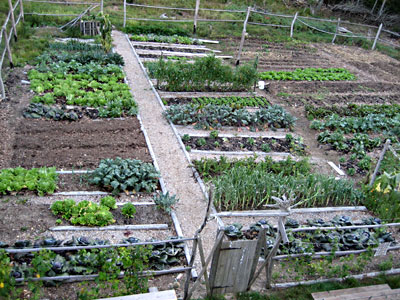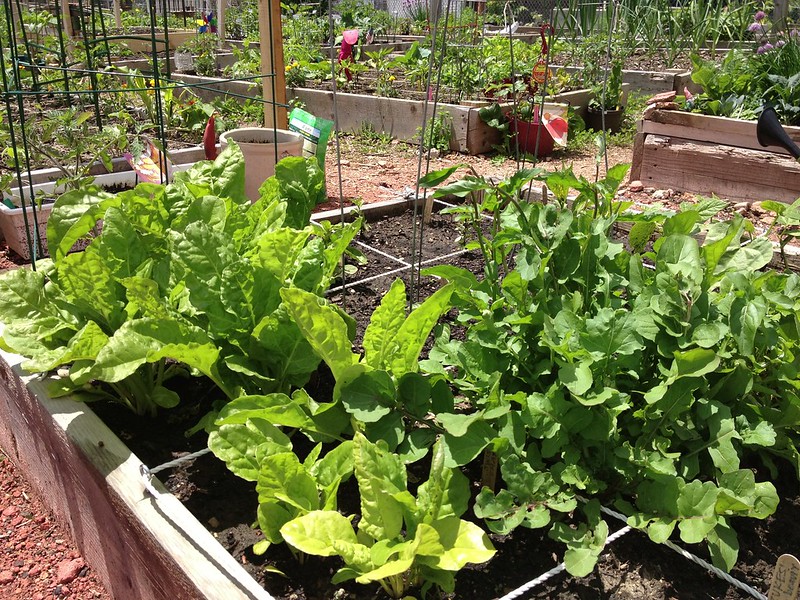Beginner’s Guide to Homestead Gardening at Home
Beginner’s Guide to Homestead Gardening at Home
Blog Article
Discover Crucial Tips for Successful Horticulture Techniques and Practices
Gardening, usually viewed as an easy pastime, encompasses a variety of strategies and practices that can dramatically affect the outcome of your efforts. By prioritizing necessary components such as soil wellness, efficient watering methods, and proper plant option, garden enthusiasts can develop a flourishing ecological community that supports dynamic growth. Furthermore, comprehending the nuances of insect management and seasonal upkeep can further enhance efficiency. Several lovers neglect vital information that can make or damage their horticulture success-- exploring these forgot elements might disclose the secret to growing a flourishing yard.
Understanding Dirt Health
Dirt health is an essential facet of successful horticulture, as it straight affects plant development, nutrient schedule, and community equilibrium. Healthy soil is defined by an abundant biodiversity of microorganisms, organic issue, and a balanced pH degree, which together produce an environment conducive to plant development.
To recognize soil health and wellness, one need to consider its physical, chemical, and biological buildings. The structure and framework of dirt affect its capability to keep moisture and nutrients, while the chemical structure establishes the schedule of vital components like nitrogen, potassium, and phosphorus. Regular dirt screening is vital to assess these aspects, permitting garden enthusiasts to make educated decisions relating to changes and fertilizers.
Additionally, advertising organic activity within the dirt is vital for keeping its health. Practices such as composting, crop rotation, and using cover plants can enhance microbial diversity, boost nutrient cycling, and minimize soil erosion. By focusing on soil wellness, gardeners not just enhance plant growth but also add to a lasting environment, guaranteeing that their horticulture techniques are environmentally accountable and resilient over time.
Effective Sprinkling Strategies
Guaranteeing that plants obtain the suitable amount of water is essential for their health and growth, particularly when combined with a strong structure of soil health and wellness (Homestead Gardening). Efficient sprinkling techniques can substantially impact plant vitality, lowering water wastage and advertising optimum development
One basic method is deep watering, which motivates origins to grow much deeper into the soil, improving dry spell resistance. This technique typically includes watering less regularly but in bigger amounts, permitting dampness to permeate the origin zone completely. Timing is likewise critical; morning is the ideal time to water, as it reduces evaporation and enables foliage to completely dry during the day, minimizing disease threats.
Furthermore, utilizing compost can assist preserve dirt wetness and control temperature, more assisting reliable sprinkling practices. Utilizing a drip irrigation system can additionally supply targeted wetness straight to the roots, making sure that water reaches where it's most needed while conserving sources.
Checking rainfall and dirt wetness levels can direct modifications in your watering routine, making sure plants receive consistent hydration without over-saturation. By embracing these efficient sprinkling methods, gardeners can promote a flourishing environment for their plants to grow.
Plant Choice and Positioning
Exactly how can the appropriate plant selection and strategic placement change a garden into a flourishing community? The synergy between plant varieties and their placement is important for producing a lively yard. When choosing plants, think about variables such as environment, dirt kind, and sunshine direct exposure. Native species are usually the very best choice as they are adapted to local problems and require much less maintenance.
Strategic placement includes setting up plants according to their growth practices and needs. Taller plants need to be positioned at the back of boundaries to avoid shading shorter plants. Furthermore, organizing plants with similar water and light requirements can improve their development and lower competitors for sources.
Integrating a variety of plants not just includes aesthetic charm however likewise advertises biodiversity, bring in valuable pests and pollinators. Take into consideration the seasonal modifications in your yard; select a mix of perennials, evergreens, and annuals to ensure year-round passion.
Last but not least, bear in mind to assess the mature dimension of plants prior to planting to stay clear of congestion and make sure appropriate air circulation. Thoughtful plant selection and calculated positioning produce an unified setting, permitting your garden to thrive while decreasing challenges.
Parasite and Illness Monitoring
Reliable parasite and disease management is important for maintaining a healthy garden ecological community - Homestead Gardening. An aggressive strategy, integrating cultural, organic, and chemical methods, can dramatically decrease the effect of insects and illness on your plants

Organic controls, such as presenting valuable pests like ladybugs or predative termites, can keep bug populations in check without hurting the setting. In addition, preserving plant health through correct watering, fertilizing, and trimming will certainly bolster their durability against diseases.
When treatment is essential, opt for targeted chemical treatments, making sure to comply with application guidelines to lessen injury to non-target organisms. Constantly prioritize sustainable techniques, as they promote long-term garden health his response and wellness and eco-friendly balance. By incorporating these approaches, garden enthusiasts can properly manage illness and insects, ensuring growing plants and an effective yard.

Seasonal Upkeep Practices
In springtime, emphasis on dirt prep work by testing pH degrees and adding required modifications. Frequently inspect emerging plants for illness and bugs.
As summer approaches, ensure sufficient irrigation while keeping track of for indications of stress or condition. Trim back thick plants to motivate air blood circulation and lower moisture around vegetation. This technique not just improves plant health yet likewise promotes flowering and Read Full Report fruiting.
With the arrival of autumn, it's time to get ready for wintertime. Tidy up dropped leaves and debris to protect against parasite infestations, and take into consideration growing cover plants to enhance dirt health. This period is likewise ideal for separating perennials and planting spring-flowering bulbs.
Verdict
Successful gardening joints on the combination of audio practices in dirt health and wellness, watering, plant choice, pest monitoring, and seasonal maintenance. By focusing on soil testing and microbial diversity, using efficient sprinkling approaches, and selecting proper plants, gardeners can produce prospering communities. Additionally, positive parasite monitoring and diligent seasonal upkeep add considerably to total garden vitality. Embracing these techniques promotes a efficient and sustainable horticulture atmosphere, making sure thriving growth and strength throughout the altering seasons.
By prioritizing essential aspects such as soil wellness, effective watering methods, and ideal plant choice, gardeners can develop a successful community that supports dynamic development. By focusing on dirt health and wellness, gardeners not just maximize plant growth yet also contribute to a sustainable community, guaranteeing that their horticulture techniques are resistant and eco accountable over time.
Taller plants must be placed at the back of boundaries to stop shading shorter plants. Clean up fallen leaves and debris to protect against pest invasions, and consider growing cover plants to enhance dirt wellness.Successful gardening joints on the combination of audio practices in soil wellness, watering, plant choice, bug administration, and seasonal maintenance.
Report this page